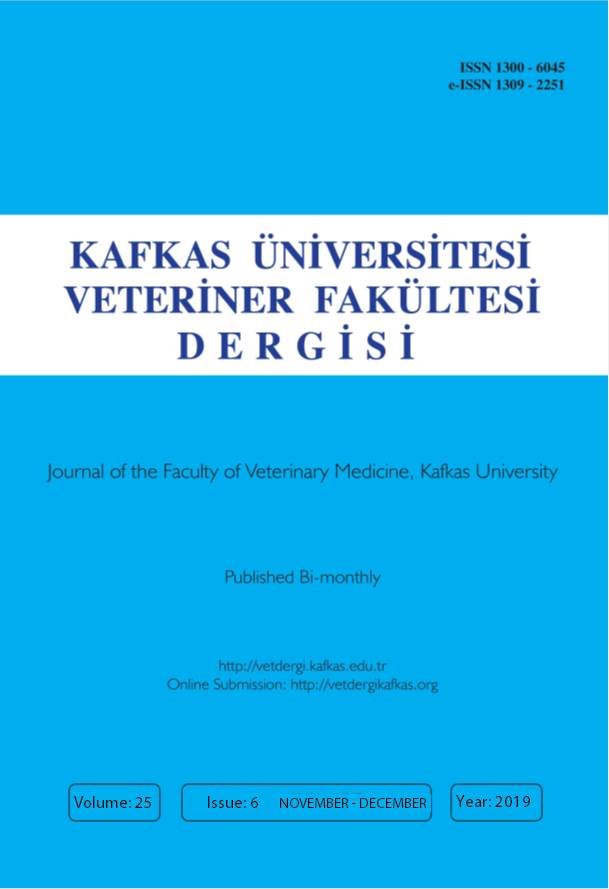
This journal is licensed under a Creative Commons Attribution-NonCommercial 4.0 International License
Kafkas Üniversitesi Veteriner Fakültesi Dergisi
2019 , Vol 25 , Issue 6
Genotoxic and Toxicopathological Effect of Aflatoxin B1 in Grass Carp (Ctenopharyngodon idella)
1Department of Animal Health, Faculty of Animal Husbandry and Veterinary Sciences, The University of Agriculture Peshawar, 25120, Khyber Pakhtunkhwa, PAKISTAN2Directorate of Livestock and Dairy Development (Research), Peshawar, 25000, Khyber Pakhtunkhwa, PAKISTAN
3Directorate of Livestock and Dairy Development (Extension), Peshawar, 25000, Khyber Pakhtunkhwa, PAKISTAN DOI : 10.9775/kvfd.2019.21988 The current study was designed to evaluate genotoxic and toxicopathological effect of aflatoxin B1 (AFB1) in fresh water fish also known as Grass carp (Ctenopharyngodon idella). For the in vitro production of AFB1, Aspergillus flavus spores were grown on potato dextrose agar (PDA) and then rice was used as a substrate. The quantity of AFB1 was found 50ppb/g of rice using high performance liquid chromatography (HPLC) technique. A total of n=150 Grass carp (42±5 g) were divided into 5 groups (A, B, C, D, E). Group A (kept as a control), while groups B, C, D and E were exposed to 25 ppb, 50 ppb, 75 ppb and 100 ppb AFB1 per kg of diet, respectively, for 49 days. The average weight gain (WG) and specific growth rate (SGR) of fish was significantly higher in group A (WG-15.35 g and SGR-0.63%) compared to group E (WG-6.55 g and SGR-0.28%). The Feed Conversion Ratio (FCR) was significantly (P<0. 05) different between control group and groups D and E. No mortality was notice in any group of fish because of AFB1. However, increasing concentrations of AFB1 significantly lowered the red blood cells (RBC) count, hematocrit, hemoglobin concentration, mean corpuscular volume (MCV), white blood cells (WBC) count and lymphocytes as compared to the control group. Additionally, significant increase of aspartate amino transferase (AST), alanine amino transferase (ALT), glucose, urea and creatinine was determined in AFB1 treated groups by serum biochemistry. Total serum proteins and albumin level was found significantly higher in control group (6.05 and 4.2 g/dL), compared to AFB1 exposed groups including; group B (5.8 and 3.9 g/dL), group C (5.4 and 3.7 g/dL), group D (4.2 and 2.7 g/dL) and group E (3.8 and 2.06 g/dL). The genotoxicity of AFB1 was only recorded in fish of group D and E exhibiting micronuclei frequency percentage of 0.85 and 2.15% respectively. The histopathological study revealed that higher concentrations of AFB1 were causing pathological changes in liver, kidney, intestine and gills tissue. The present study concluded that AFB1 was responsible for reduction in fish production performance, alteration in fish hematological and serum biochemical profiles, structural and functional alteration in tissues and DNA of tissues of fish. Keywords : Toxicology, Aflatoxin B1, Ctenopharyngodon Idella, Hematology, Histopathology, Genotoxicity










